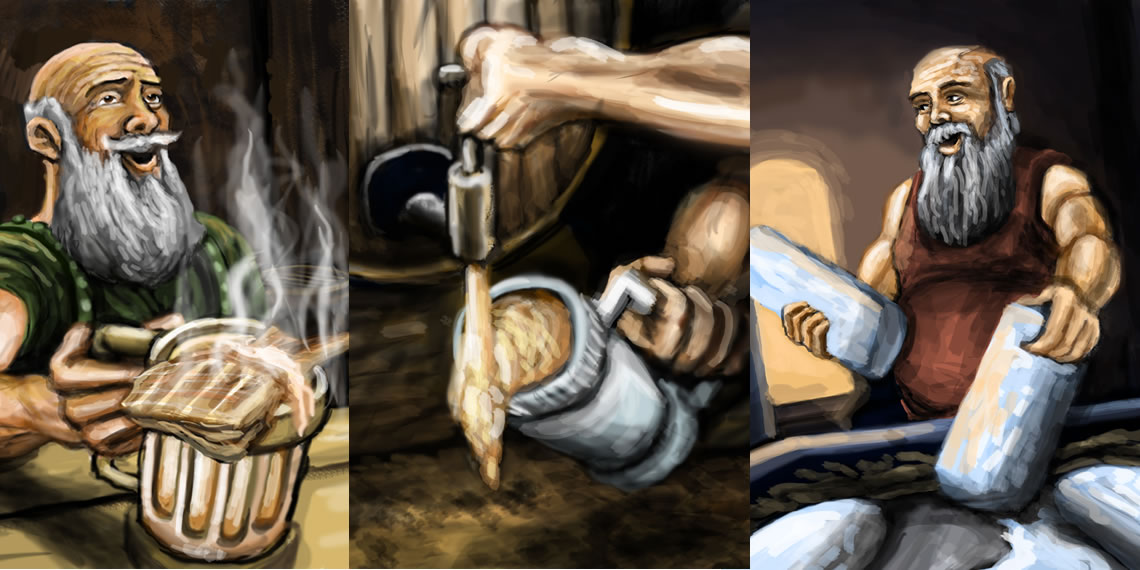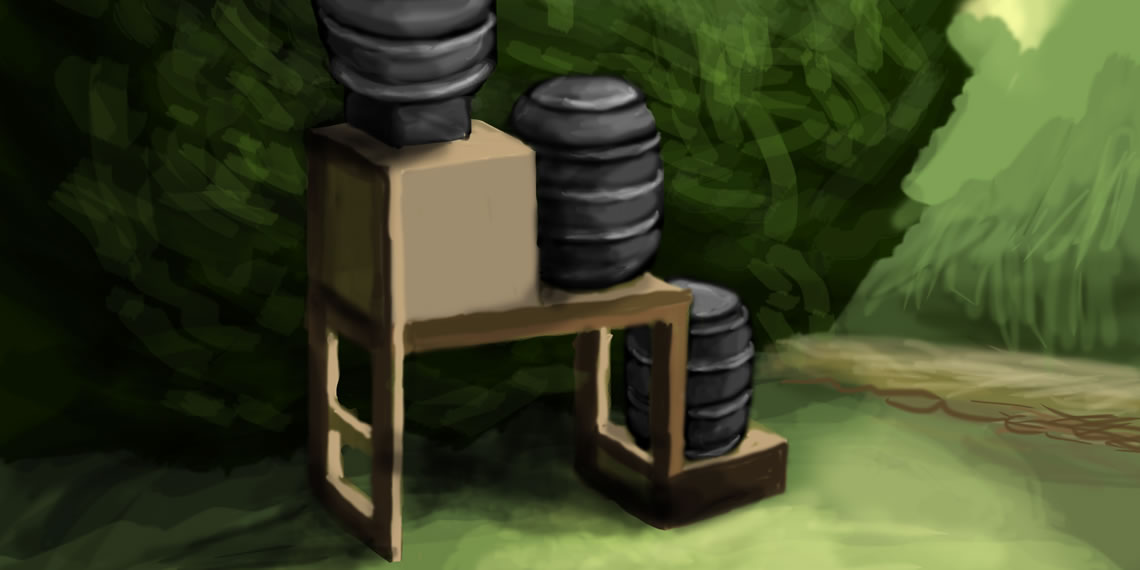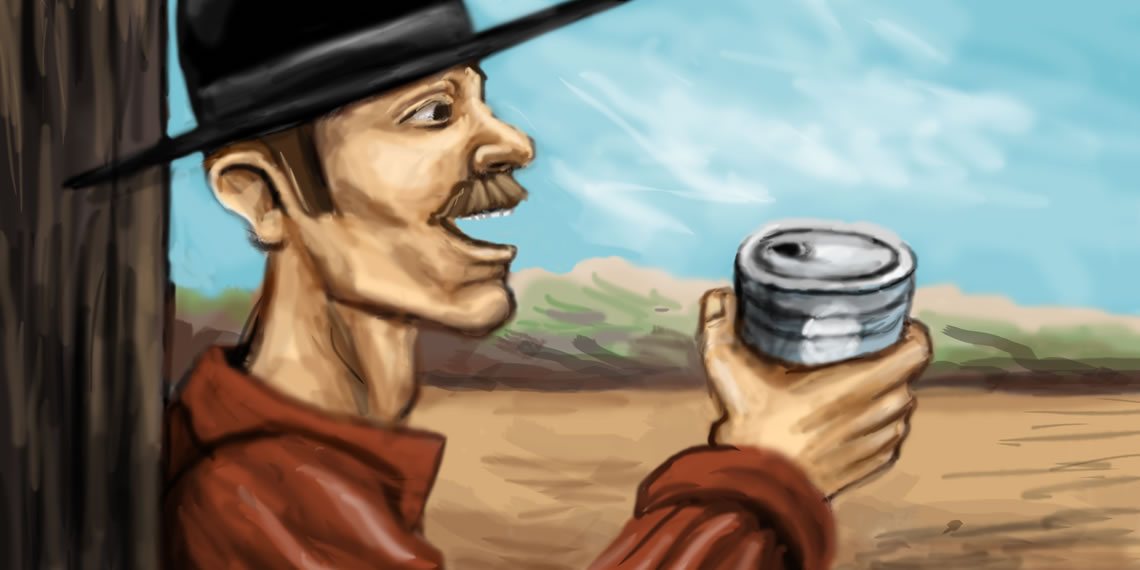The first beer brewers in North America to brew on a large commercial scale were the German immigrants. The most successful of these came to be know as the "Beer Barons", and during the second industrial revolution these beer barons worked hand in hand with the inventors that were pioneering the field of refrigerating technology. Without their entrepreneurial enthusiasm, we may have never had what has come to be known as the modern kegerator.
The main problem the beer barons were trying to overcome was expanding their territory. The beer they produced was a fine product, but getting it out while it was still fresh was a challenge. The railroad was making things easier, as well as designs for air and ice cooled rail cars, but beer could only be kept cold as long as the ice lasted. A need arose for an unlimited supply.
By the mid-1870s, over 2,500 breweries were operating in the United States, and the nation's beer production increased from about 10 million barrels (31 gallons per barrel) to nearly 40 million barrels per year between then and 1900. Those brewery owner-operators that once spent 18-hour days bent over malting ovens and brew kettles began to become rewarded for their efforts, with loyal followings of fresh European immigrants who could find brewery employment through familiar and cultural ties.
Adolphus Busch was one of the most forward thinking of the Beer Barons, and his company still shows the momentum of his efforts. In order to promote his national "Budweiser" brand from coast-to-coast, he had rail cars custom made that would keep his company's beer cool during transport, and established an extensive network of ice houses to store his beer in a manner that it would retain its freshness. He toured relentlessly to promote his beer with special events and promotions.
One of the most inventive promotions for Busch's beer was the position of "beer collector". These agents would visit saloons where Busch's beer was sold and, once a month, buy rounds of Busch's beer for the patrons. This boon would be delivered in proportion to the amount of company beer that the saloon purchased, and so propagated both an increasing customer base and a product association with spontaneous celebration. Sounds like a fun job, too!
Many breweries were either content with their local clientele or unwilling to invest in the "newfangled" ice and cold air machines found their business flagging as the beer barons overtook the market with their states-wide and national brands. Even the beer barons themselves soon found that the corporate business model was beating them out from an investment-capitol angle, and soon started selling out ownership as stock companies.
By 1914 there were only 1400 breweries left in the United States due to a variety of factors: fierce commercial competition, price wars with foreign companies, and consolidation of resources. At the same time, due to increases in understanding of cooling technologies, cold beer was getting ever closer to the home.
The Beer Barons of the second industrial revolution contributed much to the financial impetus toward technological advancements that, in the end, brought us the kegerator. Although, by the end of their era, their product became bland and flavorless compared to the craft brewed traditions that they came from. With the home brew resurgence of the last twenty years, and the knowledge of cooling technology culminating from all those years, the beer connoisseurs of today reap all of the benefits of both worlds.
 Continue to Part Five: Prohibition and Cold Beer
Continue to Part Five: Prohibition and Cold Beer
Komos
 Summit
Summit
 Beverage-Air
Beverage-Air
 DCS
DCS
 Marvel
Marvel
 Perlick
Perlick
 Bull
Bull
 Avanti
Avanti
 Danby
Danby
 CM Becker
CM Becker
 Continental
Continental
 Fagor
Fagor
 Cal Flame
Cal Flame
 Twin Eagles
Twin Eagles
 Fire Magic
Fire Magic
 GrowlerWerks
GrowlerWerks
 Hestan
Hestan
 Igloo
Igloo
 True
True
 Intertap
Intertap
 Kegco
Kegco
 Keggermeister
Keggermeister
 Koolatron
Koolatron
 KegLand
KegLand
 Krowne
Krowne
 Krups
Krups
 Lynx
Lynx
 Maxx Cold
Maxx Cold
 Micro Matic
Micro Matic
 Midea
Midea
 Nor-Lake
Nor-Lake
 Nostalgia
Nostalgia
 Arctic King
Arctic King
 Synek
Synek
 Taprite
Taprite
 Turbo Air
Turbo Air
 UBC Group
UBC Group
 Value Series
Value Series
 Versonel
Versonel
 VinoTemp
VinoTemp
 New Leaf
New Leaf





